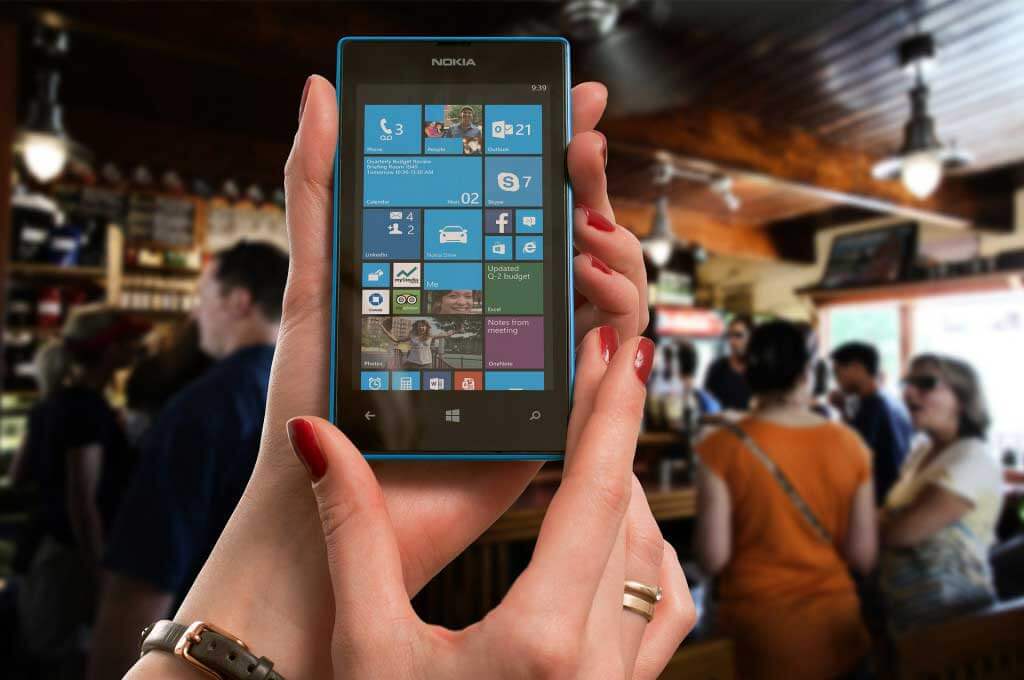Technology to Improve Productivity
Since its emergence, technology has transformed how human beings live their lives. It has impacted almost every section of human lives, including how brands and companies perform their functions. This means that brands have had to transform their function, including their relationships with clients, customers, and employees. In addition, smartphones and laptops have changed how customers view and experience their brands.
Since 2000, the music industry in America has lost more than 42 percent of its value. Companies like Apple have benefited from this technological advancement and generate more revenue than even box office sales in America. Additionally, the US iOS app industry provides several employment opportunities that cross even those offered by Hollywood. WhatsApp has more than 600 million users, a number that is increasing every single day.
Today, technology allows brands and companies to expand their horizons and establish their roots in countries they never thought of before. In other words, technology is a single defining factor changing how brands function across all sectors and categories. The explosion of the net and smartphone has further fuelled how companies conduct their work and have changed the structure of brand functioning, which was initially used for over a century.
Even more interesting is that how brands function is changing rapidly. This is because technology is changing rapidly, and if brands are to be successful, they will have to adapt to this changing pace effectively.
Both large and small operations of brands and companies have been affected by this changing pace of technology, which is why staying updated on the latest trends can help brands get ahead of their competition. With major advancements in mobile technology, almost all the functions of brands and companies are now being conducted on these small devices.
When people can shop, advertise, read, purchase, and bank mobile devices, it can impact how companies in a multifold manner. By challenging traditional business models, the internet and mobile devices have delivered multiple benefits of improved productivity for brands and companies across all sectors.
Mobile technology is changing rapidly, providing customers endless choices across services and products. By integrating old business models with new technology, brands can transform their business and offer unlimited choices to consumers, whether they can access the internet or not. By unlocking mobile technology’s full potential, brands can effectively discover the next stage of growth and development.
All in all, this means that technology has the potential to transform how brands interact across all their platforms completely. But while it is easy for big companies to adopt technology as they do not lack human power or money resources, small companies cannot say the same. According to a study, many managers feel that munging evolving technologies is a major concern for small companies.
This is because if companies fail to keep up with the technology trends, it becomes straightforward for them to fall out with the rest of the sector, which can eventually lead to the failure and closing of a company.
Further, small companies are very wary of investing resources to adapt to this change and generally depend on the IT support team and product lenders. At the same time, small brands and organizations must understand that investing in such technology will only help them get ahead in the long run. For the first time, small brands can implement technology that can transform their brand while simultaneously leveling the playing field for brands across categories.
Advantages
Here are some key advantages of how brands can be transformed as a result of technological advances:
- Technology can help companies reduce business costs: A business has multiple costs, from investing in hardware to dues payment. Many company functions like record-keeping, accounting, and payroll can be done through tools and apps, effectively reducing the workload. Technology has enabled many companies to go paperless and conduct their functions and transactions on the internet/computers/mobile devices. In addition, by creating a secure environment, brands can conduct their function safely, reliably, and effectively.
- Technology can help companies communicate and connect better: Business technology can help small companies improve their internal and external communication. On the one hand, using emails, texts, websites, and personal digital product applications called apps has made it easier for companies to connect with their employees and share their workload. On the other hand, business technology can also help brands connect and communicate with their customers effectively. Companies can connect with consumers innovatively and creatively using different methods and platforms, increasing brand loyalty and connection. These technologies allow customers to communicate with brands and companies, especially on social media platforms. By interacting with brands in real-time, consumers and brands can engage in communication that is indeed a two-way street.
- Business technology can help companies go global in the true sense: Earlier brands were restricted by region because brands needed a lot of resources to expand. With the advent of the internet and smartphones, it has become possible for brands to expand their reach using just these resources. Rather than seeing products and services in their local region, brands can now sell the same to a global audience using the internet’s power and reach. Retail websites are one of the most popular and common ways to improve productivity in which companies can reach a global audience simply and effectively. A low-cost option, websites allow consumers to access a wide range of products and services at all times. Using different resources like web banners and websites, even small brands can effectively expand their reach and customer base.
A major aspect in which technology can help companies is to enhance and improve productivity levels within an organization. That is why productivity is one of the most important elements in any organization, and mergers across sectors and organizations know that consistent productivity is the only way to ensure sustainable results, especially in the long term. Managers and top management must introduce processes that will help employees be effective and productive sustainably. Whether a business organization has been set up to produce a product or render a service, it will always try to pool its resources to develop a better product and service to increase its market share and brand loyalty. When companies have a more significant market share, they will effectively increase their sales productivity and, in turn, their profits. That is why productivity is one of the main focuses of all brands and organizations. Higher productivity will, in turn, also bring about other benefits like higher salaries, improved work environments, enhanced morale, better working conditions, and better employee-employer relationships.
Business technology can therefore help the organization to boost or sometimes can even cause hindrance to employee productivity. In some cases, technology can distract employees from effectively performing their functions. Still, it can boost and increase productivity across all sections when appropriately employed. By helping employees collaborate, work remotely, and effectively manage time, companies must know how to implement technology to perform tasks more simply and faster. This helps companies reduce their resources and use opportunities that were to date hidden.
Image source: pixabay.comIn fact, according to a study conducted by O2 Business and CEBR, productivity has increased by 84 per cent during the last 40 years, only because of advancements in technology.
At the same time, it is essential to understand that implementing new technology requires the support of an organization’s top management. Selecting the right technology software and training employees in using these mediums is essential. All this will require a good level of investment in terms of human resources, time, and money, but it has long-term benefits and potential as well. Here are some improved productivity ways in which companies can ensure better productivity among their employees and staff:
- Companies must give their employees access to secure and consistent information: Bigger companies take much longer to adapt to the changes in the market, mainly because they are more extensive. Here, small and mid-level companies can use technology to adapt quickly to these trends and changes. When companies have a secure and reliable network based on intelligent routers and switches, employees can benefit from the multiple opportunities in the market. Giving employees access to valuable information can help boost their productivity and give them tools to help them succeed in a competitive environment.
- By being in touch with consumers, technology allows brands to expand their reach and power: Brands must be productive to stay ahead of their competition, meaning they must always be connected with their target audience. That is why brand owners must provide employees with tools and techniques that allow them to connect and communicate with their customers, irrespective of where they are now. With tools like virtual private networks, employees can work anywhere and still enjoy safe access to business networks.
- By connecting with clients and customers, business technology makes it easy for brands to expand: To expand, brands need a smooth collaboration between their partners, customers, and suppliers. An intelligent network allows brands to share various tasks, increasing effectiveness and growth.
- Make mobile phones an essential aspect of growth: Mobile phones have immense reach and power. They allow people to connect instantly. But sometimes, missed calls can lead to project delays, missed opportunities, and lost revenue. With a networked voice and data solution, employees can have one phone that rings on multiple devices so that customers can reach the right person; by allowing the staff to check their voicemail, fax, and email with just one phone, brands can rediscover how they function.
- Use technology to monitor business productivity and progress of employee goals: There are many online business productivity software solutions available in the market that can enable managers to track progress during each phase of goal completion and offer immediate reinforcement or coaching to keep performance and deadlines on track. This will help companies achieve greater business productivity because this helps employees learn new skills while performing to the best of their capability. Track work goals and reward employees with monetary and non-monetary incentives to be encouraged them to perform to the best of their ability.
- Develop a long-term technology plan: Technology is constantly changing and evolving. That is why replacing obsolete hardware that can hamper employee productivity and bring the office to a standstill is essential. Minimize such disruptions by carefully determining short and long-term business objectives and working with network vendors to deploy technologies to meet the goals.
Overall, ensuring continuous productivity is the only way companies can stay ahead of their competition. Increased productivity brings with it many benefits and allows brands to capture the loyalty of the customers and the market share. That is why investing in business productivity is one of the best ways companies can use the opportunities in the market and be a place for employee learning and growth.
Recommended Articles
We hope that this EDUCBA information on “Technology to Improve Productivity” was beneficial to you. You can view EDUCBA’s recommended articles for more information,



